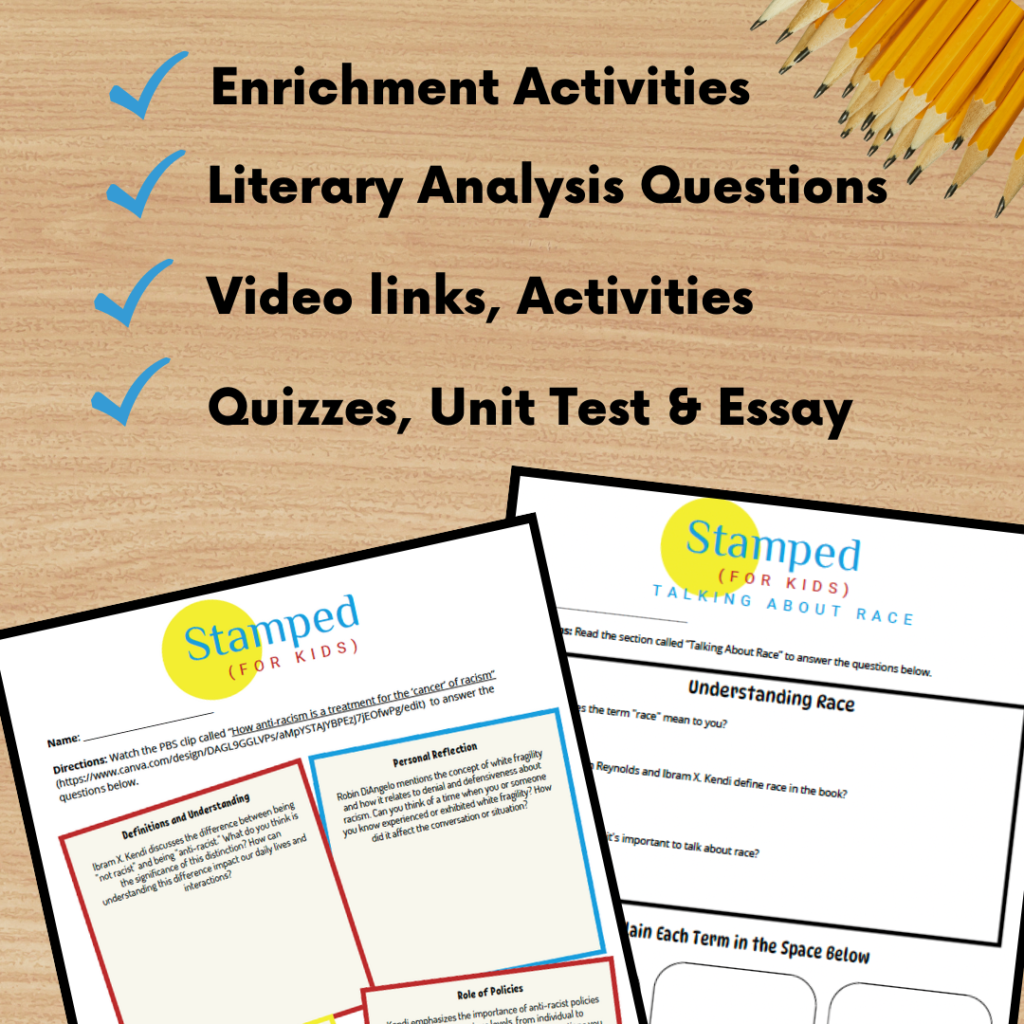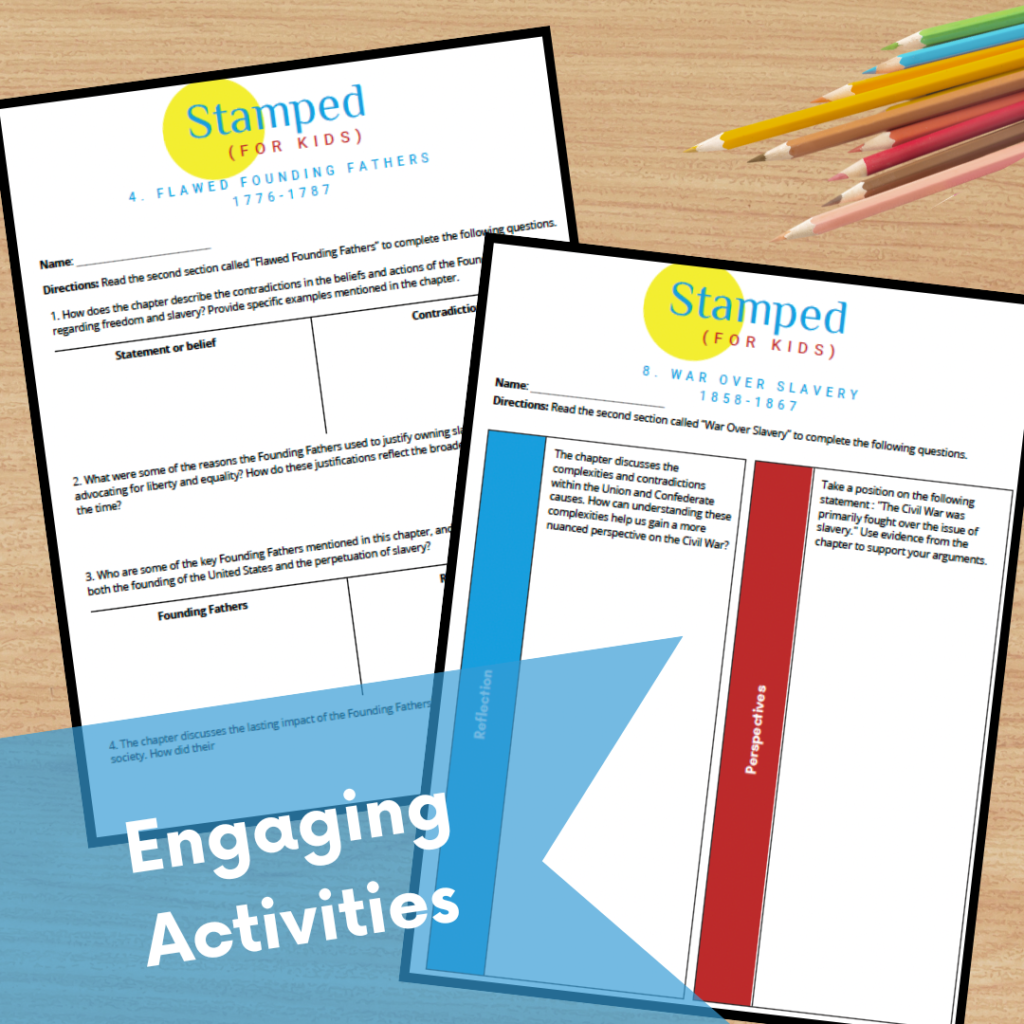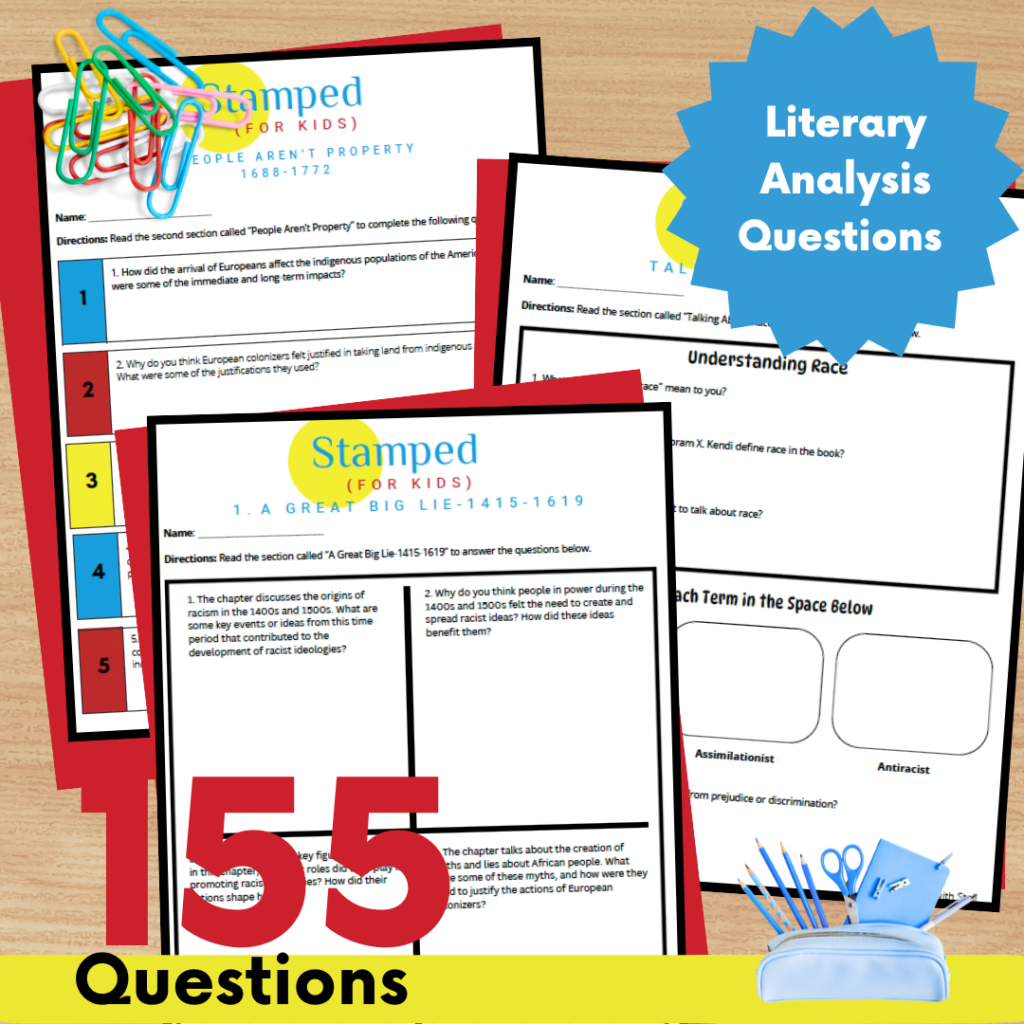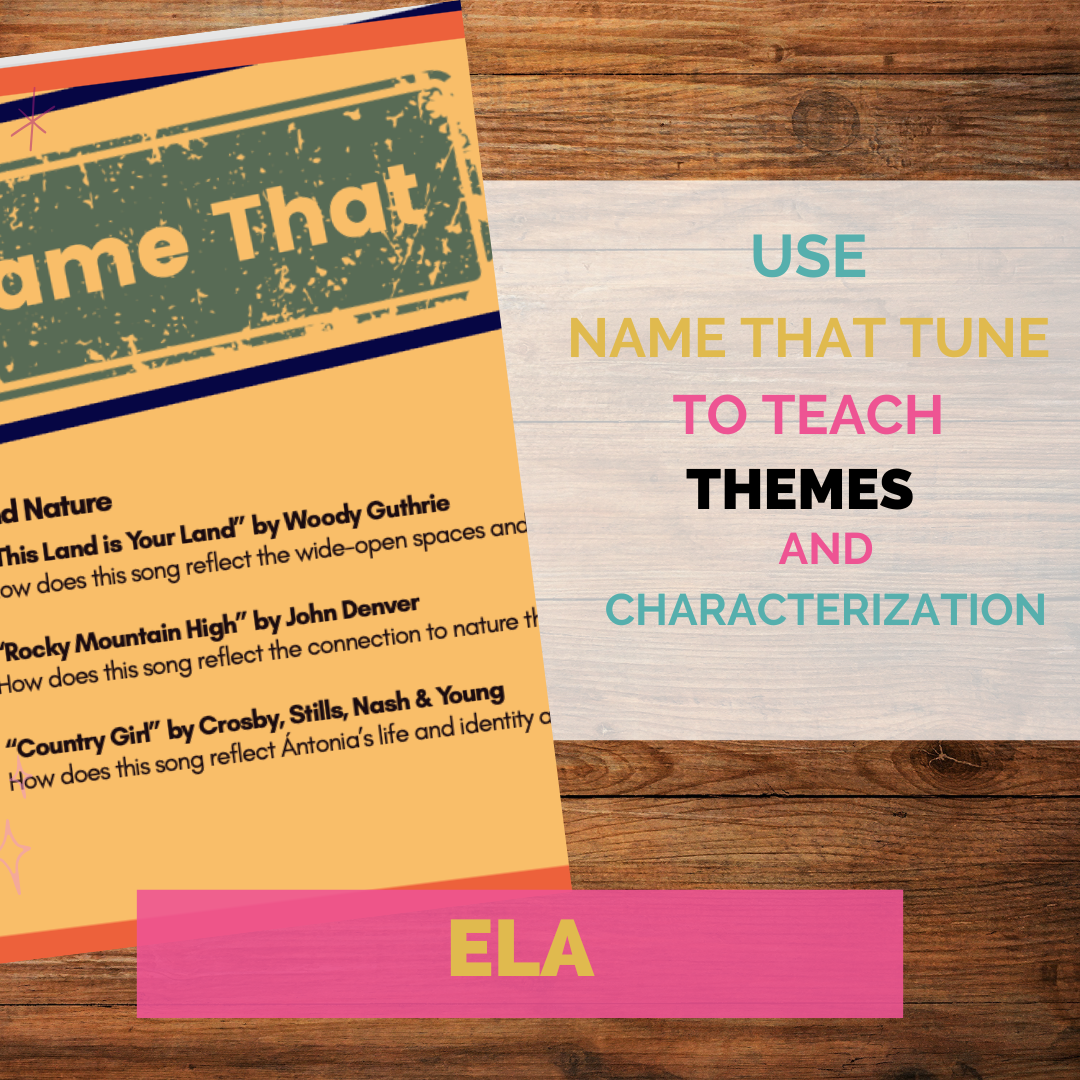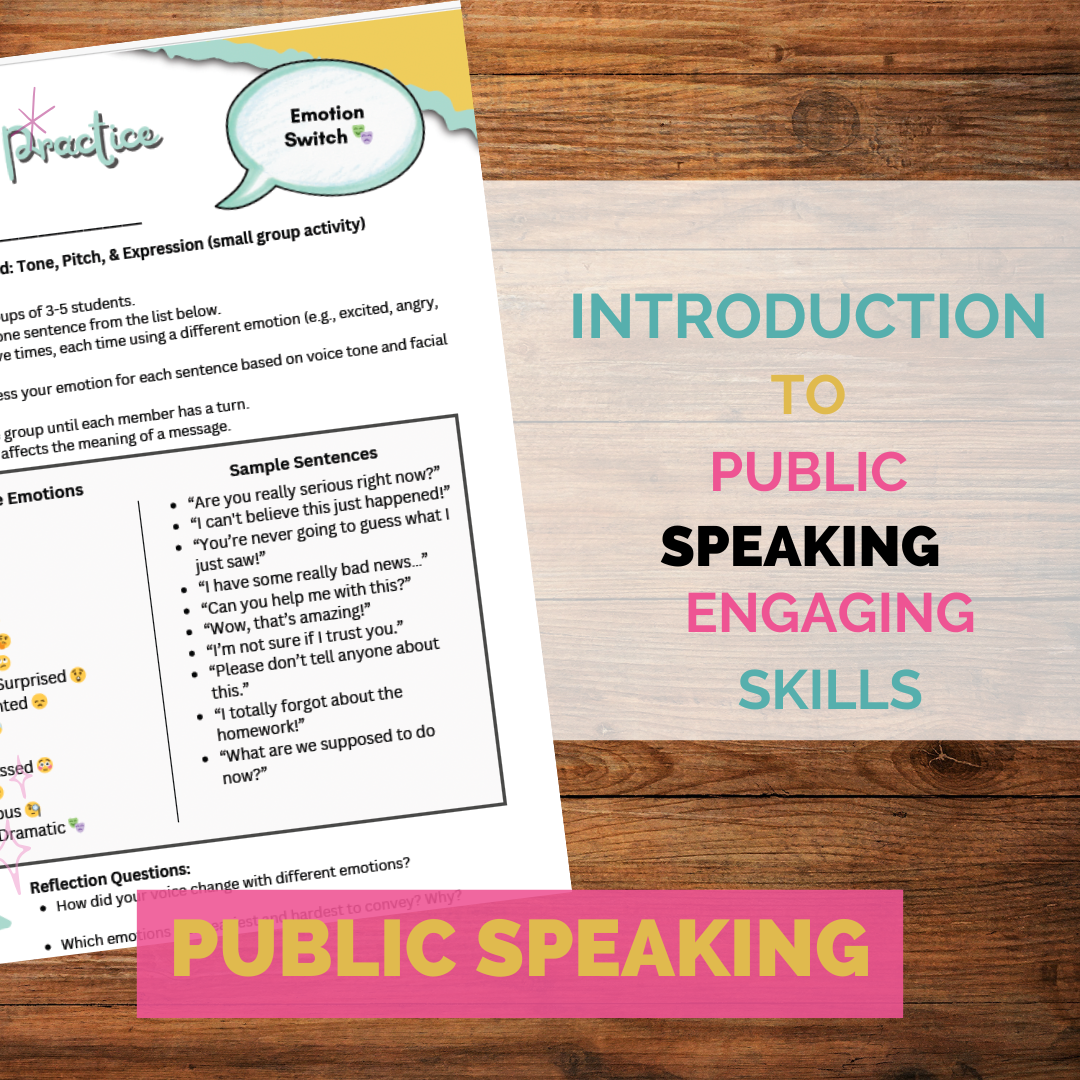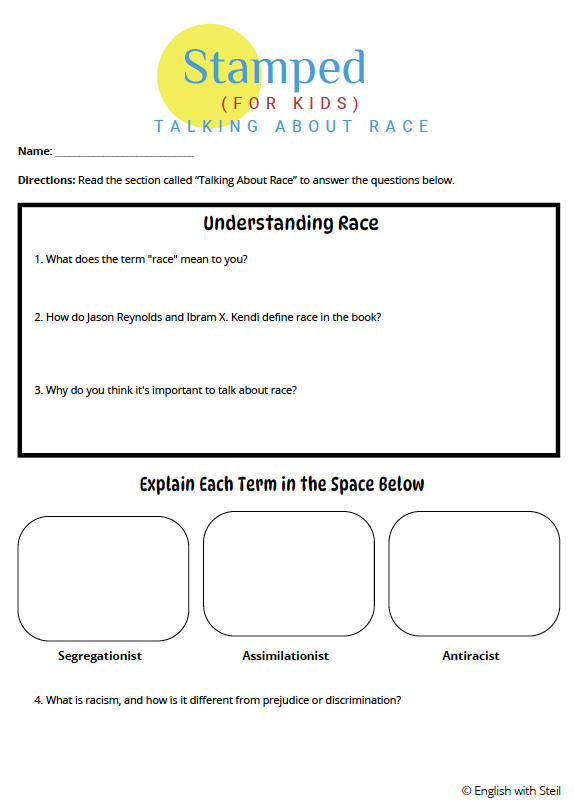
As educators, we carry the responsibility of shaping not just informed students, but compassionate and critical thinkers. Stamped (for Kids) by Jason Reynolds and Ibram X. Kendi is a powerful tool to help fulfill this mission. Teaching this book is more than just covering history; it’s about empowering students to understand and challenge racism, both in the past and in the present.
Why Teach Stamped (for Kids)?
Stamped (for Kids) offers a unique opportunity to discuss race and racism in a way that is accessible and engaging for younger students. The book breaks down complex ideas and historical events into language that students can understand without oversimplifying the issues. It connects the dots between history and the present day, making it clear that the struggles against racism are ongoing and relevant.
Teaching this book helps students develop critical thinking skills as they explore the origins of racist ideas and how they have been used to justify inequality. It also encourages empathy, by helping students understand the experiences of those who have been marginalized throughout history. Moreover, it aligns with many educational standards, including social studies and literacy, making it a valuable addition to your curriculum.
As educators, we don’t just teach facts—we shape critical thinkers, compassionate individuals, and future changemakers. Teaching Stamped (for Kids) by Jason Reynolds and Ibram X. Kendi is more than just covering history; it’s about empowering students to recognize, understand, and challenge racism—both in the past and the present.
This book is an accessible, engaging, and eye-opening tool that helps students navigate complex discussions about race, history, and social justice. If you’re looking for ways to incorporate this powerful book into your classroom, this guide will give you practical strategies, engaging discussion ideas, and creative projects that will make your lessons meaningful and impactful.
Why Teach Stamped (for Kids)?
At its core, Stamped (for Kids) provides students with an entry point to discussing race and racism in a way that is age-appropriate, thought-provoking, and highly relevant. The book simplifies complex historical events and ideas without watering them down, making it an excellent resource for helping students draw connections between the past and the present.
Top Reasons This Book Belongs in Your Classroom
✅ It Makes History Engaging and Relevant
Many history books present racism as something that happened a long time ago, but Stamped (for Kids) shows how these ideas evolved over time and still affect society today. The book connects historical events to current racial issues, making it easier for students to understand why history still matters in their daily lives.
✅ It Fosters Critical Thinking
This book challenges students to think critically about race, bias, and stereotypes. It helps them question how racist ideas spread, who benefits from them, and how they can be challenged—valuable skills they will carry into adulthood.
✅ It Builds Empathy
Understanding history is not just about dates and events; it’s about people’s lived experiences. This book allows students to see history through different perspectives, helping them develop empathy for those who have been affected by racist policies and ideas.
✅ It Helps Students Recognize Their Own Role in History
One of the most powerful aspects of Stamped (for Kids) is that it doesn’t just tell students about the past—it encourages them to think about how they can help shape the future. It inspires activism, advocacy, and a sense of responsibility.
How to Teach Stamped (for Kids): Engaging Strategies for the Classroom
Teaching about racism can feel intimidating, but with the right approach, you can create a supportive and thought-provoking environment where students feel safe to ask questions, express ideas, and grow as learners.
1. Create a Safe Space for Honest Conversations
Before you begin, establish classroom norms that encourage respectful dialogue. Many students may feel nervous discussing race, so it’s important to create an open, judgment-free environment.
💡 Teaching Tip:
- Set ground rules like “Listen to understand, not to respond” and “It’s okay to not have all the answers”.
- Use anonymous surveys to gauge students’ comfort levels with discussing race before and after reading the book.
2. Start with a Pre-Reading Discussion: What Do We Already Know?
Kick off your Stamped (for Kids) unit with a pre-reading discussion or writing prompt to assess students’ prior knowledge and attitudes about race and history.
💡 Discussion Prompts:
- What does racism mean to you?
- How do you think racist ideas spread?
- Do you believe racism still exists today? Why or why not?
- What do you already know about the history of race in America?
This exercise helps you understand where your students are coming from and gives them a foundation to build on as they read.
3. Use Chapter-by-Chapter Discussions to Encourage Critical Thinking
Rather than assigning the book all at once, break it into sections and hold structured discussions.
💡 Teaching Tip:
After each chapter, ask students to:
- Summarize what they learned.
- Identify the main idea.
- Ask a question they still have.
- Make a connection to their own lives or current events.
This helps reinforce comprehension and ensures that students engage with the text on a deeper level.
4. Bring History to Life with Multimedia & Primary Sources
Stamped (for Kids) introduces students to important historical figures and events. To deepen their understanding, pair the book with real-world resources.
💡 Ideas for Historical Context Exploration:
- Watch short documentaries or TED Talks on topics like slavery, segregation, and the Civil Rights Movement.
- Analyze primary sources like speeches, newspaper articles, and letters from key historical figures.
- Invite guest speakers from civil rights organizations or local history groups to discuss racial history and activism.
Making history visual and interactive makes it more engaging and memorable for students.
5. Encourage Creative Expression Through Projects
Let students process what they’ve learned through creative activities.
💡 Project Ideas:
- Create a “Racist Ideas Timeline”: Have students map out how racist ideas evolved over time.
- Write a Letter to a Historical Figure: Students can write a letter to someone in the book, either asking questions or responding to their actions.
- Illustrate a Key Moment: Encourage artistic students to create visual representations of the events in the book.
- Record a Podcast Episode: Let students discuss themes from the book in a podcast format.
Creative projects help students connect with the material in a personal and meaningful way.
6. Connect the Book to Current Events
Stamped (for Kids) is not just about history—it’s about how history impacts today’s world. Help students draw connections between the past and the present.
💡 Teaching Tip:
Have students research:
- The Black Lives Matter movement
- Modern-day voter suppression laws
- Immigration and racial discrimination
- The racial wealth gap
By linking history to real-life issues, students see that racism is not just something of the past—it’s something they can actively work against today.
7. Use Empathy-Building Activities to Foster Deeper Understanding
Empathy is a crucial part of understanding race and racism. Help students step into someone else’s shoes through perspective-taking exercises.
💡 Ideas for Empathy Activities:
- Role-Playing Scenarios: Have students reenact moments from history to better understand different perspectives.
- Journaling Prompts: “How would you feel if you were in Cándido’s or América’s position?”
- “Walk in Their Shoes” Reflection: Assign students to write from the perspective of a historical figure in the book.
These activities help students move beyond abstract ideas and truly feel the impact of racial injustice.
Strategies and Ideas for Teaching
Start with Open Dialogue: Before diving into the book, create a safe space for students to discuss what they already know about race and racism. This can be done through a class discussion or anonymous surveys. It’s important to establish that all questions and feelings are valid, and that this is a learning journey for everyone.
Chapter-by-Chapter Discussions: Break the book into manageable sections and discuss each chapter in detail. Encourage students to ask questions and express their thoughts. This can be done through guided reading sessions, where you read a chapter together and pause to discuss key points.
Historical Context Exploration: Stamped (for Kids) references many historical events and figures. Supplement your lessons with multimedia resources like documentaries, primary source documents, and guest speakers. This will help students build a deeper understanding of the historical context and see the real-world impact of the ideas discussed in the book.
Creative Projects: Encourage students to express their learning through creative projects. This could include writing a reflective essay, creating a visual art piece, or even developing a short play or skit based on a chapter. Creative expression allows students to process the material in a personal and meaningful way.
Connecting to Current Events: Help students draw connections between the book and current events. This can be done through classroom discussions, journaling prompts, or research projects. By linking past and present, students can better understand the ongoing nature of the fight against racism.
Empathy Building Activities: Use role-playing or perspective-taking exercises to help students empathize with those who have been affected by racist ideas and policies. These activities can be powerful in helping students internalize the importance of standing up against injustice.
Key Ideas Students Will Learn
Teaching Stamped (for Kids) will introduce students to several crucial concepts:
The Evolution of Racist Ideas: Students will learn how racist ideas have developed over time, often in response to social, political, and economic changes. They will see how these ideas were used to justify slavery, segregation, and other forms of inequality.
The Impact of Individuals: The book highlights how individuals, both famous and ordinary, have played a role in promoting or challenging racist ideas. This helps students understand that everyone has the power to make a difference.
The Power of Narratives: Students will explore how stories and narratives can be used to perpetuate stereotypes or challenge them. This is a critical literacy skill that will serve them well in all areas of life.
Empathy and Justice: At its core, Stamped (for Kids) is about fostering empathy and a sense of justice. Students will be encouraged to think about what fairness and equality mean and how they can contribute to a more just society.
Key Takeaways from Stamped (for Kids)
By the end of this unit, students will have a deeper understanding of:
✔ The evolution of racist ideas and how they’ve shaped history.
✔ How individuals (both historical figures and everyday people) influence social change.
✔ How narratives and media shape perceptions of race.
✔ How they can be active participants in fighting against racism.
Final Thoughts: Why Teaching Stamped (for Kids) Matters
Teaching Stamped (for Kids) isn’t just about history—it’s about helping students understand the world around them, develop empathy, and think critically about racial injustice. By creating open discussions, engaging projects, and real-world connections, educators can help students become more informed, compassionate, and socially conscious citizens.
📚 Are you ready to teach Stamped (for Kids) in your classroom? What strategies have worked for you? Let’s share ideas in the comments below! 👇✨
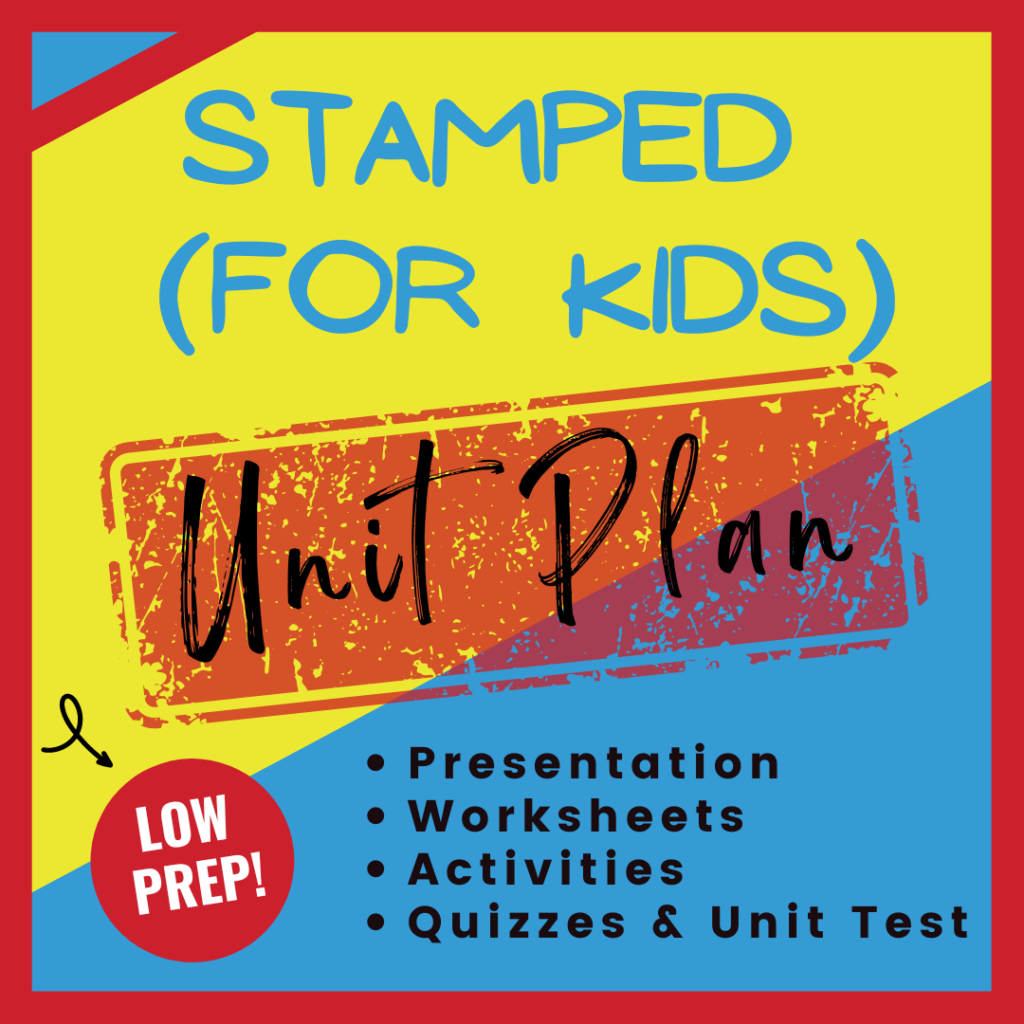
Conclusion
Teaching Stamped (for Kids) is a powerful way to help students understand the complexities of race and racism in America. It’s an opportunity to foster empathy, critical thinking, and a commitment to justice. By using thoughtful strategies and engaging activities, you can guide your students through this challenging but essential topic, preparing them to be informed and compassionate citizens.
Incorporating Stamped (for Kids) into your curriculum isn’t just about teaching history; it’s about helping your students understand the world they live in and empowering them to make it better. As educators, there is no greater goal.
Check out resources from my fellow teacher authors
Getting Started in Anti-Racist Self-Education (for Teachers) by Secondary Sara

